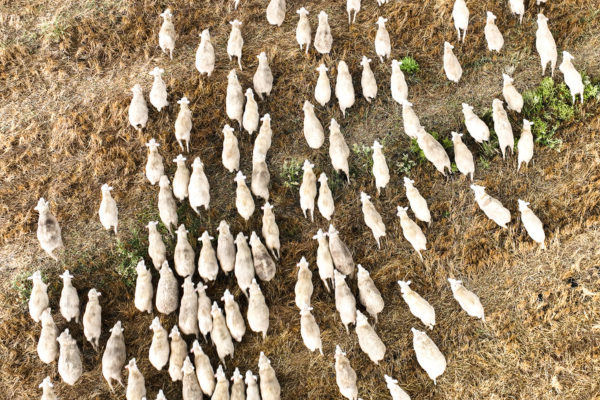Summer rain can bring with it a few challenges for livestock producers. We discuss some of the key issues below.

Parasites
An obvious, often cited issue after summer rain is worms. Barber’s Pole in particular, thrives in these conditions, and can take hold in livestock quickly. Outbreaks are being recorded at an increasing rate throughout eastern Australia so be on the lookout for affected stock. Elders Livestock Production Advisor Peter Reardon at Gundagai has seen a significant spike in worm egg numbers as has Adam Turnbull in the New England area. Monitoring is key in conditions such as this to prevent losses.
Nitrate Poisoning
Less obvious, but just as dangerous as worms, is the challenge of high nitrate levels in the fresh pick, including summer forages such as lucerne. Lucerne, the great enigma, is a panacea and a challenge. Lambs or young cattle grazing immature lucerne after significant rainfall can experience scouring, weight loss and death.
Palatable fibre (cereal hay or straw) can reduce the intake of the nitrate crop. The inclusion of a starch supplement in the diet will help soak up excess nitrogen. This could be in the form of lick or cereal grain – always ensure you consult your Elders Livestock Production Advisor regarding safe methods of grain feeding.
Pulpy Kidney
Young stock gorging on any sudden change in feed are likely going to be challenged by Pulpy Kidney disease. If their most recent vaccination was more than 12 weeks ago, make sure you re-vaccinate. It is also highly recommended to include B12 in the vaccine for production stock.
Ryegrass Staggers
Toxins in Perennial Ryegrass seed or fresh re-shoot from summer rain can cause staggers, flighty behaviour, heat stress, ill-thrift and death. Following the same rules of thumb described above for managing lucerne can help, but there are also mycotoxin binders available now to aid in control of ryegrass toxicity. These mycotoxin binders can also be used on mouldy hays, silages or grains.
Toxic weeds
There is a long list of weeds, many specific to certain areas.
The key message with any potentially toxic weed is that by and large, they are unpalatable – stock will only eat them if they are starving.
Some common toxic weeds to look out from include:
- St John's Wort. Causes severe photosensitisation in non-pigmented, non-wool bearing skin.
- Hairy panic. Causes liver damage and photosensitisation.
- Soursop/Oxalis. Binds up calcium in the rumen leading to hypocalcaemia (calcium deficiency) and kidney damage.
- Cathead/Bindi-eye. Causes nitrate poisoning, liver damage and photosensitisation.
- Common heliotrope/ Potato weed. Causes chronic liver damage.. Causes liver damage and photosensitisation.
The best strategy is to provide an alternate (palatable) feed source. The stock will let you know what they think of the feed in the paddock by how quickly they demolish the supplement.
 Common heliotrobe / Potato weed
Common heliotrobe / Potato weed
Barber's Pole Worm
Conditions are now ideal for the proliferation of Barber’s Pole Worm. Recent rain and mild days with an abundance of green feed provide the perfect environment for a rapid worm build up on pastures. Remember, a female worm lays 10,000 eggs a day - so burden levels rise very quickly.
Symptoms could include lethargy, depression and anaemia (in acute cases). It can be hard to detect early infections as sheep do not scour.
Suggested action is to:
- Conduct faecal egg counts at least every three weeks, especially young sheep.
- Monitor lambs and weaners closely. If you notice sheep falling behind while mustering drench immediately with an effective drench and leave alone. Re-Test 14 days post drench.
| Mob worm risk level | |||
| Risk factors | High | Medium | Low |
| Age | < 1-yo | 2-yo & CFA | 3, 4, & 5-yo |
| Breed | Merino | Croddbred | Shedding |
| Pasture | Short green with dry canopy | Long green | Long dry |
| Grazing history (last 3-6 months) | Early to mid-lactation ewes or weaners | Late lactation or pregnant ewes | Dry sheep, cattle |
| Stock rate | High | Medium | Low |
| Weather | Mild and wet (18 to 250) | Warm and wet (25 to 300) | Dry |
| Conditions | Cool nights, morning dews | Cool nights | Dry nights |
| Feacal Egg Count | 300+ | 100-300 | < 100 |
| Last drench | > 6 weeks | 4 – 6 weeks | < 4 weeks |
Need help?
Help from your local livestock production specialist is just a phone call away.
